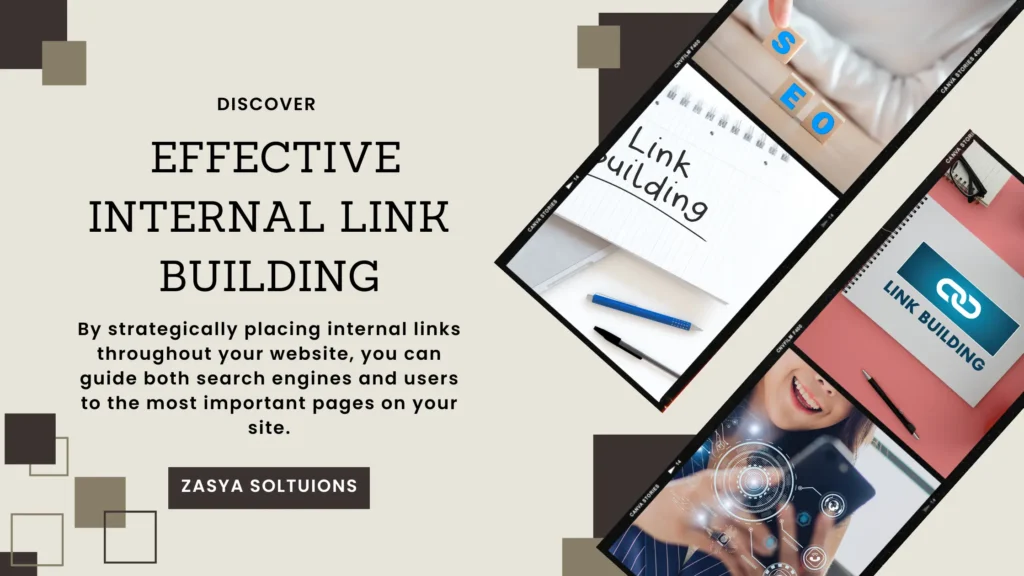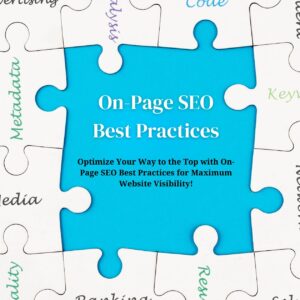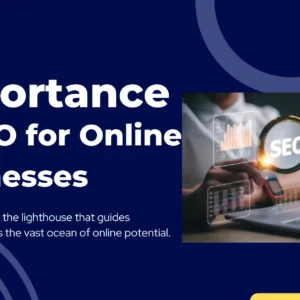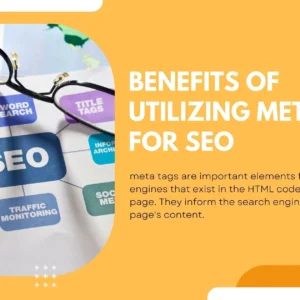Are you ready to unlock the hidden potential of internal link building for SEO and digital marketing? It is not just a mere tactic; it’s an essential component of any successful SEO and digital marketing strategy. By strategically placing internal links throughout your website, you can guide both search engines and users to the most important pages on your site. One key benefit of internal linking is improved visibility in search engine results pages (SERPs).
In this blog, we will delve into the importance of strategic internal linking and explore key strategies to boost your website’s visibility and rankings. Get ready to take your online presence to new heights with the power of well-placed internal links!

The importance of internal link building for SEO and digital marketing
Internal link building is a crucial aspect of SEO and digital marketing strategies. It not only helps to improve website visibility and traffic but also enhances the user experience and engagement. By strategically placing internal links throughout your website, you can guide visitors to relevant content, increase the time they spend on your site, and ultimately boost conversions.
Search engines like Google consider internal linking an important factor in determining the relevance and authority of web pages. Therefore, understanding the basics of internal linking is essential for any successful SEO and digital marketing campaign.
The basics of internal linking for SEO and digital marketing
Imagine you’re building a house. Before you can start adding the finishing touches and decorating the rooms, you need to have a solid foundation in place. The same concept applies to SEO and digital marketing strategies. Internal linking serves as the foundation for your website’s structure and plays a crucial role in improving its visibility in search engines. So, what exactly is internal linking? Simply put, it refers to the practice of connecting different pages within your website through hyperlinks. These links allow users to navigate between related content easily, while also providing search engine bots with clear pathways to crawl and index your site. Internal linking is not only beneficial for the user experience but also has significant implications for SEO.
When done right, it can help improve your website’s organic rankings, increase traffic, and boost conversions. By strategically placing internal links throughout your site, you can guide both users and search engines towards important pages or sections that deserve more attention. Improper link buildings are one of the SEO mistakes by small business owners.
Be mindful of the number of internal links on each page. Too many links can dilute their effectiveness and confuse both users and search engine crawlers. Focus on quality over quantity by including relevant internal links that add value to the user’s journey. By mastering these basic principles of internal linking, you’ll lay a solid foundation for optimizing your website’s SEO performance and achieving better results in digital marketing campaigns.
Key strategies for effective internal link building in SEO and digital marketing
When it comes to effective internal link building in SEO and digital marketing, there are several key strategies that can greatly enhance your efforts. One important strategy is to create a hierarchy of pages on your website, with each page linking to others in a logical and organized manner. This helps search engines understand the structure of your website and improves crawlability, ultimately boosting your overall search engine rankings. Additionally, it is crucial to focus on creating high-quality content that naturally incorporates relevant keywords and phrases. By doing so, you can ensure that your internal links are contextually relevant and provide value to both users and search engines.
Another effective strategy is to regularly audit and update your internal links, ensuring they remain active and pointing to the most relevant pages on your site. This not only improves the user experience but also signals to search engines that your website is well-maintained and up-to-date. Finally, don’t underestimate the power of anchor text in internal link building. Using descriptive anchor text that accurately reflects the content of the linked page can greatly improve visibility for both users and search engines. By implementing these key strategies, you can unlock the true potential of internal link building, drive more traffic to your site and improve your overall performance.
The impact of anchor text on internal link building for SEO and digital marketing
Anchor text plays a crucial role in the effectiveness of internal link building for SEO and digital marketing. It refers to the clickable text that is hyperlinked to another page or resource on the same website. The choice of anchor text can significantly impact how search engines understand and rank the linked content. When optimizing internal links, it’s essential to use descriptive and relevant anchor text that accurately reflects the linked page’s content. By incorporating keywords or key phrases into the anchor text, you can provide search engines with valuable context about your content, helping them understand its relevance and improving its visibility in search results. Additionally, using varied anchor texts throughout your website can help distribute link equity more evenly across different pages, enhancing overall SEO performance.
Remember to avoid generic terms like “click here” or “read more” as anchor texts; instead, opt for specific and keyword-rich phrases that provide meaningful information about what users can expect when they click on the link. By understanding the impact of anchor text on internal link building, you can optimize your website’s navigation structure and improve its visibility in search engine rankings for targeted keywords and topics.
Best practices for optimizing internal links in SEO and digital marketing campaigns
Internal link building is a crucial aspect of SEO and digital marketing campaigns. It plays a significant role in enhancing website traffic, improving search engine rankings, and ultimately driving conversions. To ensure the effectiveness of internal links, it is essential to follow best practices for optimization. One key practice is to use descriptive anchor text that accurately reflects the content of the linked page. This not only helps search engines understand the context but also provides users with clear expectations of what they will find when clicking on the link. Another best practice is to strategically place internal links within relevant content. By linking related pages together, you can create a logical flow and guide users through your website seamlessly.
Ensuring that your internal links are visible and easily accessible to users is crucial for their success. Consider using visually appealing buttons or call-to-action phrases that entice visitors to click on the link. Regularly monitoring and analyzing your internal link performance can help identify any issues or areas for improvement. By tracking click-through rates and bounce rates, you can gain insights into which links are most effective and make necessary adjustments accordingly.
Leveraging content relevance to enhance internal link building in SEO and digital marketing
One of the key strategies for effective internal link building in SEO and digital marketing is leveraging content relevance. When it comes to internal linking, it’s not just about placing random links within your content; it’s about ensuring that those links are relevant and add value to the reader’s experience. By linking to related content within your website, you can help search engines understand the context of your pages and improve their visibility in search results. This can be achieved by strategically placing anchor text links throughout your content that lead to other relevant pages on your site. When implementing this strategy, it’s important to consider the relevance and quality of both the source page and destination page. The source page should provide valuable information that supports or expands upon the topic at hand, while the destination page should offer further insights or solutions related to that specific topic.
Leveraging content relevance through strategic internal link building is an effective way to enhance both user experience and search engine optimization efforts. By connecting related pieces of content within your website and providing valuable resources for readers, you can boost organic traffic, increase time spent on your site, and improve overall visibility in search results.
Advanced techniques to boost the effectiveness of your internal links in SEO and digital marketing
One of the advanced techniques to boost the effectiveness of your internal links in SEO and digital marketing is by implementing schema markup. Schema markup is a type of code that you can add to your website to provide search engines with additional information about your content. By using schema markup, you can enhance the visibility and relevance of your internal links in search engine results pages (SERPs). For example, if you have an internal link to a product page on your e-commerce website, you can use schema markup to display important details such as price, availability, and customer reviews directly in the search results.
This not only makes your internal links more appealing to users but also increases their chances of clicking on them. Schema markup helps search engines understand the context and relationship between different pages on your website, which can further improve their ranking potential.
Practical tips to avoid common pitfalls when implementing an effective internal linking strategy
When it comes to implementing an effective internal linking strategy for SEO and digital marketing, there are several common pitfalls that you should be aware of. These pitfalls can hinder the success of your efforts and prevent you from fully unlocking the power of strategic, well-placed internal links.
To avoid falling into these traps, here are nine practical tips to keep in mind:
1. Plan your internal link structure: Before adding links throughout your website, take the time to plan out a logical and organized structure.
2. Use relevant anchor text: When creating anchor text for your internal links, be sure to use keywords or phrases that accurately describe the content you are linking to.
3. Avoid over-optimization: While it’s important to include keywords in your anchor text, be cautious about over-optimizing. Too many exact-match anchor texts can appear spammy and may actually harm your SEO efforts.
4. Regularly update and maintain your internal links: As your website evolves, pages may be deleted or URLs may change. It’s crucial to regularly check and update your internal links to ensure they are still leading users to relevant content.
5. Consider user experience: Internal links should enhance the overall user experience by providing additional information or guiding visitors through related content on your site. Make sure that each link adds value for the user.
6. Utilize breadcrumb navigation: Breadcrumb navigation not only aids in user navigation but also provides additional opportunities for internal linking within specific categories or sections of your website.
7. Monitor page load times: Slow-loading pages can negatively impact user experience and discourage visitors from exploring further through internal links. Optimize page load times by compressing images, minifying code, and leveraging browser caching.
8. Conduct regular site audits: Perform periodic audits of your website to identify any broken or outdated internal links. Fixing these issues will ensure a smooth user experience and maintain the integrity of your internal linking structure.
9. Track and analyze your internal link performance: Use analytics tools to track the effectiveness of your internal links.
In a nutshell:
Unlocking the secret to effective internal link building is akin to discovering the key to a hidden treasure chest. The secret lies in your hands—the power to connect, engage, and elevate your content. It’s time to seize the opportunity, strategically weaving links that not only enhance navigation but also propel your website to new heights. Unleash the potential within your content and witness the transformative impact of effective internal link building!






